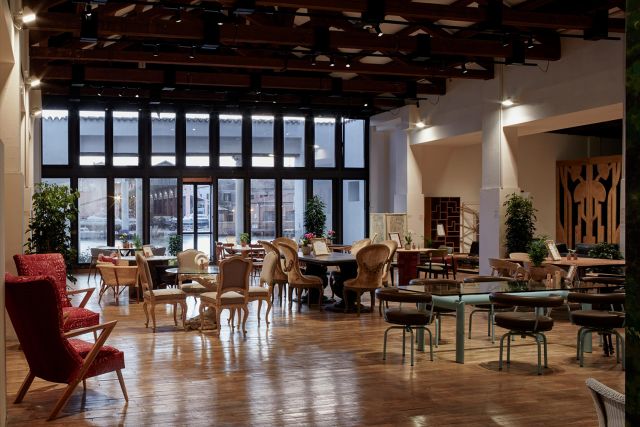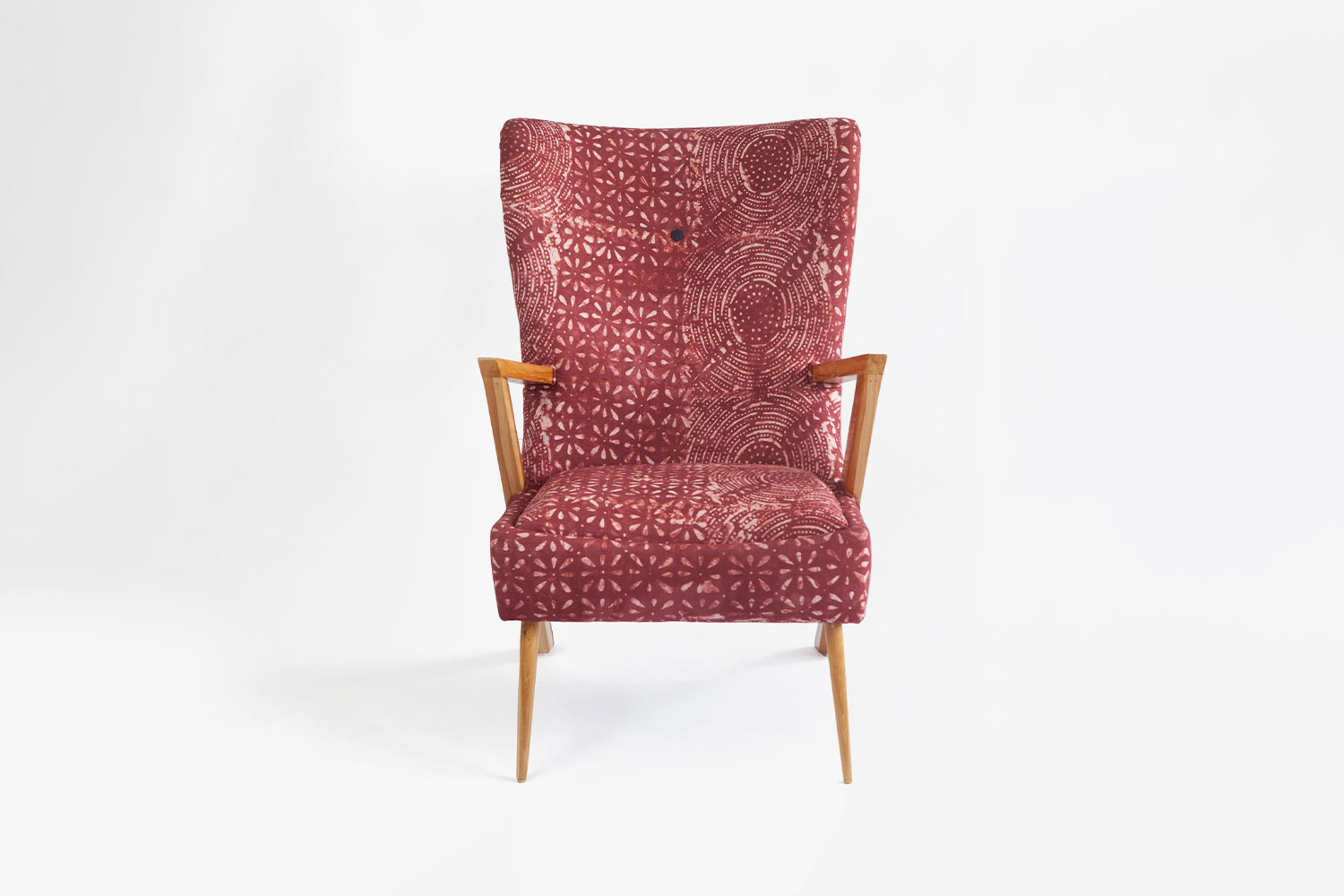Àdùnní Pupa
The Àdùnní chair is handcrafted from oven-dried and treated Nigerian teak wood, layered with seating foam and connected with brass nails. The upholstery comprises two culturally significant textiles: hand-dyed batik adiré fabric on the front, and hand-loomed asò-oké fabric displaying a perforated pattern on the back. These fabrics are traditionally used as dresswear. Adiré tends to be worn as everyday wear, while asò-oké is for celebratory and ceremonial wear. The significance of using these fabrics on furniture gives the material an aura of permanence.
Detailed FeaturesTechniqueStory
● Type: Armchair
● Dimensions: 70 L x 85 W x 104 H cm
● Material: Teak wood, textile
● Date: 2016
Attached to the Àdùnní chair’s wooden frame are two distinct textiles. Adiré, a hand-dyed batik, is used on the front. Adiré uses wax-resist methods whereby motifs are hand-painted onto fabric using starch paste typically made from cassava flour. The fabric is then dipped into natural dye, and once dry, the resist is removed leaving behind the patterned fabric. Asò-oké Onja-wú ati iho, a hand-loomed fabric, covers the back. The textile is woven on a wooden handloom using hand-processed cotton threads. The thread is dyed and then interlaced onto the loom to set up the pattern, which the weaver weaves with a spindle to create narrow strips that are then sewn together to make a bigger cloth.
The Àdùnní chair celebrates African modernism. The materiality of the chair reflects an interest in the history and aesthetics of European modernism while upholding traditional African craftsmanship. The chair’s name means "daughter of the sweet one" in Yoruba. Yoruba culture has deep mythological ideologies, which manifest in the patterning on the adiré fabric. On the Àdùnní chair, the swirls are known as Alángbá Bèrèkètè. The big stomach of the alángbá (lizard) signifies wealth, and there is a proverb associated with it: "when a lizard lies on its belly, you cannot tell what's inside", meaning we cannot tell from looking at someone what they are thinking. The petal pattern is ewe ege, which is the cassava leaf. Cassava is a common tuber vegetable used to make eba and fufu, Yoruba starch foods.
 The Artisan: a crafted tea roomExhibition
Exhibitor
The Artisan: a crafted tea roomExhibition
Exhibitor
 © Ilé Ilà
© Ilé Ilà
 © Ilé Ilà
© Ilé Ilà
 The Artisan: a crafted tea roomExhibition
Exhibitor
The Artisan: a crafted tea roomExhibition
Exhibitor




 Nigeria
Ilé Ilà by Tosin Oshinowo
Nigeria
Ilé Ilà by Tosin Oshinowo
 Nigeria
Tosin Oshinowo
Nigeria
Tosin Oshinowo




